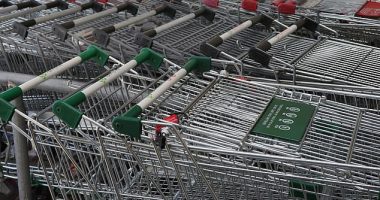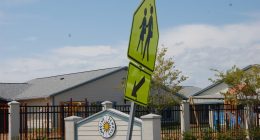Australia’s immigration approvals have doubled in some categories, at a time when the country is already gripped by a housing shortage and a cost-of-living crisis.
The Department of Home Affairs has revealed how many applications were finalised during the first nine months of the 2022-23 financial year, compared with the same period to the end of March in 2021-22.
The skilled migration category saw a 111.7 per cent increase, with the permanent intake rising to 144,040, up from 68,055.
Student visa approvals, classified as temporary but long-term arrivals, increased by 154.4 per cent to 511,149, up from 200,941.
Tasmanian Labor senator Helen Polley, a member of Prime Minister Anthony Albanese’s government, asked about the numbers in a Senate legal and constitutional affairs committee.


Immigration approvals have doubled in some categories as Australia grapples with a rental and cost of living crisis (pictured is a rental queue at Bondi in Sydney’s east)
‘Has there been an increase in visa applications this year?’ she asked.
‘Post the Covid rebuild, I imagine we are seeing more applications and therefore more applications being processed in a timely manner?’
Treasury is expecting a record 400,000 migrants to have arrived in Australia in 2022-23 when departures are subtracted from arrivals.
Australia is forecast to take in 1.5 million more migrants in the five years to June 2027, the May Budget papers revealed.
Despite that, the Business Council of Australia has released a new report describing the idea of a ‘Big Australia’ as a myth and saying high immigration was not connected with unaffordable housing.
In Sydney, Australia’s most migrant-dependent city, unit rents in the year to July have surged by 25.1 per cent to $660.45 a week, SQM Research data showed.
Treasurer Jim Chalmers on Sunday admitted climbing rents were a major driver of inflation.
‘Rent is one of the inflationary pressures which is most acute right now,’ he told Sky News business editor Ross Greenwood.
But asked about immigration, Dr Chalmers stressed international students were the biggest source of permanent and long-term student arrivals.
‘The two biggest drivers of migration recovering is actually the students, number one,’ he said.
The Treasurer, however, said net immigration, was surging because fewer people were leaving to live and work overseas.
‘Fewer Australians leaving to work overseas and so that’s what’s driving the number temporarily and it’s largely a recovery from what we saw during Covid,’ he said.


The Department of Home Affairs has revealed student visa approvals, classified as long-term arrivals, increased by 154.4 per cent to 511,149, up from 200,941 (pictured are students outside the University of New South Wales in Sydney)
Australia reopened the border to migrant visas holders in December 2021, after the national population shrunk in 2020, on a quarterly basis, for the first time since 1916 due to Covid lockdowns when many temporary arrivals left.
Shadow immigration minister Dan Tehan said: ‘Labor claim they don’t want a Big Australia but judge them by their actions not their words.’
Read Related Also: Inflation at lowest level since early 2022, easing fears of rates rise
The total finalised visas tally rose by 290.5 per cent to 6.1 million, up from 1.57 million.
Of that intake, 5,744,507 were temporary, including students and tourists, while 404,022 were permanent, covering skilled migrants and family reunion.
Despite the numbers being high already, the Business Council of Australia, which supports an ongoing intake of cheap labour, has argued immigration ‘should not be the scapegoat for poor planning and the failure to deliver housing supply’.
The BCA’s chief executive Jennifer Westacott slammed the use of the term ‘Big Australia’ even though even the corporate-friendly Liberal Party is using the term to criticise Labor’s mass immigration policy.
‘Current migration numbers are a post-pandemic readjustment not a “Big Australia” policy,’ she said.
‘It is disingenuous to call current migration numbers part of a “Big Australia” policy.
‘The narrative that there is currently a “Big Australia” policy in play is a myth.’


The Business Council of Australia’s chief executive Jennifer Westacott (second left next to Prime Minister Anthony Albanese) slammed the use of the term ‘big Australia’ even though the Liberal Party, traditionally the side that is pro-business, has used this term to criticise Labor
However figures do show Australia’s population growth pace of 1.9 per cent in 2022 was among the highest in the developed world, dwarfing the U.S. growth rate of 0.4 per cent.
Sydney’s median house price of $1,333,985 in July was now 11.3 times Australia’s average full-time salary of $94,000, even with a 20 per cent mortgage deposit factored in.
But the BCA blamed the deteriorating affordability of homes on ‘factors outside the migration system’.
A key Business Council member is Commonwealth Bank chief executive Matt Comyn whose total pay package rose by $3.5million in the past financial year to $10.426million, equating to a 50 per cent raise with bonuses included.








